Click to Skip Ahead
A low number of red blood cells (also called erythrocytes), or anemia, can be found in cats in various pathologies. Anemia can make your cat feel weak and tired, have pale mucous membranes, breathe fast, and have no appetite. The number of red blood cells can be checked at a routine blood test, known as a complete blood count.
If your cat is anemic, your vet can increase the number of their red blood cells by several means, depending on the cause of their condition. In serious situations, when the anemia is severe, the vet may recommend a blood transfusion.
In this article, learn the role of red blood cells, the causes that can lead to the decrease of these cells, and how your vet can increase the number of erythrocytes.

How to Increase Red Blood Cells in Cats
If your cat is anemic, your vet will recommend several diagnostic procedures in order to get down to the bottom of the issue. They will start with blood testing and sometimes viral testing, chest and abdominal x-rays and scans, and additional urine, fecal, and blood tests, as required. Then your vet can recommend available and most appropriate options to increase the number of red cells in your cat.
This is not something you can do at home, particularly not without the vet’s advice and guidance. Treating anemia without knowing the cause is likely to be unsuccessful and harmful, and we cannot stress enough how important it is to consult with your vet.
Anemia in cats may be acute due to blood loss, autoimmune disease, or trauma, while chronic anemia is usually a consequence of an underlying slowly progressing disease, such as kidney disease, viral infections, liver disease, gastrointestinal disease and hemorrhage, cancer, or something else.
1. Administering Iron Supplements
Iron supplements should only be administered on the recommendation of a vet and if there is confirmed iron deficiency anemia, which is not very common in cats. Do not give iron supplements to your cat without talking to your vet, as they will need to perform blood tests first to establish blood iron levels and total iron binding capacity. Administering these supplements can be harmful and lead to liver damage if the dosage is too high.
If your vet has diagnosed your cat with a dietary deficiency or, more likely, a chronic illness that has led to iron deficiency anemia due to depletion of iron stores, your vet will recommend a particular iron supplement. Many of these supplements are not regulated, and their safety and efficacy may not have been established. It’s important to follow your vet’s recommendations when picking a suitable supplement.
- Stomach upset
- Constipation
- Vomiting
- Diarrhea
- Blood in the stool (black tarry stool or melena)
Iron supplements should be used cautiously in pets with hemolytic anemia, hemosiderosis, or hemochromatosis and in pets with gastrointestinal ulcers. It should be used with caution in pregnant or lactating animals.
Too much iron in a cat’s body can damage the lining of the digestive tract and lead to liver damage, cirrhosis, and fibrosis.
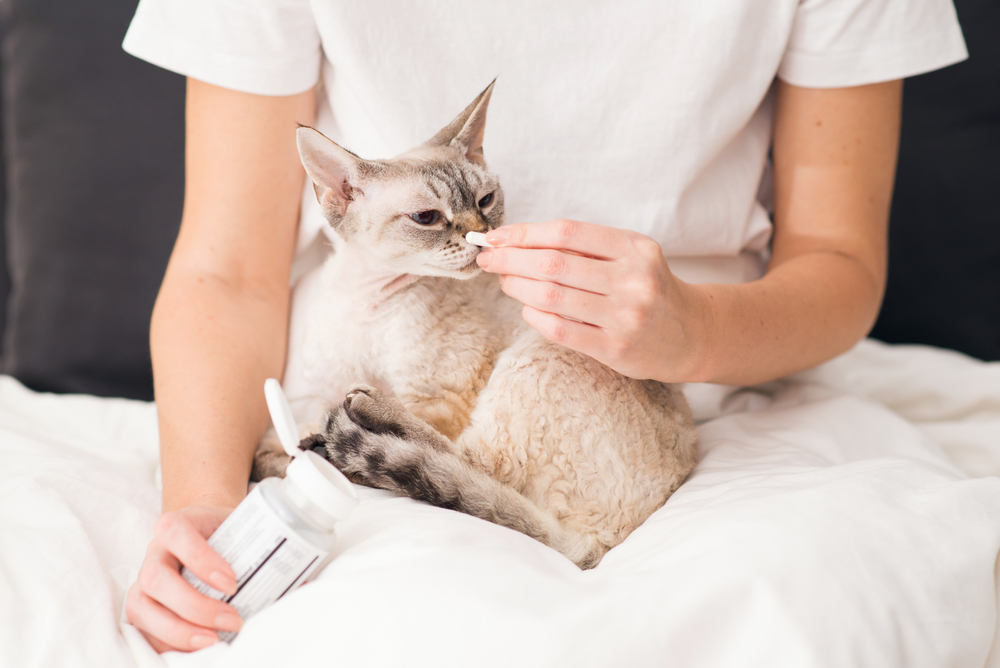
2. Providing a Diet Rich in Iron
If your vet has confirmed an iron deficiency, they may also recommend you feed your cat foods rich in iron, such as:
- Lean meat, such as chicken, turkey, or beef
- Liver (should be offered in moderation and occasionally, as its high vitamin A and copper content may lead to health issues when offered in excess)
- Fish (always cooked and without bones)
- Eggs (cooked well and only in moderation)
Only change your cat’s diet after speaking with your vet.

If you need to speak with a vet but can’t get to one, head over to PangoVet. It’s an online service where you can talk to a vet online and get the personalized advice you need for your pet — all at an affordable price!
3. Doing a Blood Transfusion
This method of increasing your cat’s red cell count will always be recommended and performed in the veterinary office. Blood transfusion is necessary and can save your cat’s life if they have severe acute anemia. Your vet will blood type your cat and keep them in for observation to make sure they are not experiencing a transfusion reaction.
4. Erythropoiesis-stimulating Medications
There are several products that may help stimulate production of red blood cells. These medicines are considered when the patient is suffering with a chronic illness that leads to anemia, such as kidney disease, and they have clinical signs of anemia, meaning they are not coping well with their illness. There are recombinant human erythropoietin and darbepoetin, and both require cautious dosing and regular monitoring during treatment due to risk of severe adverse effects.
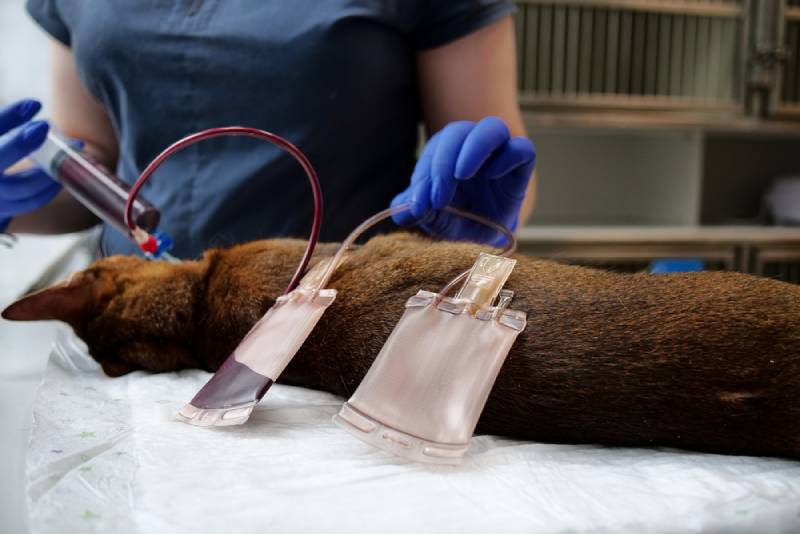
5. Novel Treatment
The U.S. Food and Drug Administration conditionally approved Varenzin-CA1 (molidustat oral suspension), the first drug for the control of nonregenerative anemia associated with chronic kidney disease in cats. Varenzin-CA1 works by helping to increase production of erythropoietin in the kidney, which in turn stimulates the bone marrow to produce more red blood cells. Speak to your vet about treatment options for your cat if they are suffering with anemia caused by chronic kidney disease.

What Do Red Blood Cells Do?
Red blood cells, or erythrocytes, are cells without nuclei that are found in the blood and are rich in hemoglobin. They are involved in cellular metabolism and ensure an optimal and constant blood pH.
The number of red cells is an important factor in the diagnosis of various pathologies. The most common medical conditions encountered in cats in which the number of red cells can be decreased are:
- Anemia
- Poisoning or intoxications
- Massive parasitic infestations
- Bleeding gastrointestinal disorders, such as gastrointestinal ulceration
- Liver disease
- Kidney diseases
- Systemic infections
- Autoimmune diseases
- Viral diseases (FeLV, FIV, etc.)
- Cancer
The increase or decrease in the number of red blood cells must be corroborated with other values from the complete blood count (e.g., hemoglobin, reticulocyte count, etc.) and with other tests, such as blood biochemistry, rapid tests, coagulation tests, etc.
What Causes Low Red Blood Cells in Cats?
The listed conditions can cause a decrease in the number of red cells through the following mechanisms:
- Cessation of red blood cell production (when the bone marrow is affected, which is the tissue where red blood cells are produced; the process itself is called hematopoiesis and includes the production of red cells)
- Blood loss, through bleeding or trauma
- Destruction of red blood cells, often autoimmune
In cats, the reference number for red blood cells is 6.9 to 10.1 x 106/µL. If the number of erythrocytes is below this reference range, it means your cat is suffering from anemia, which can be mild, moderate, or severe. Anemia can be regenerative and non-regenerative.
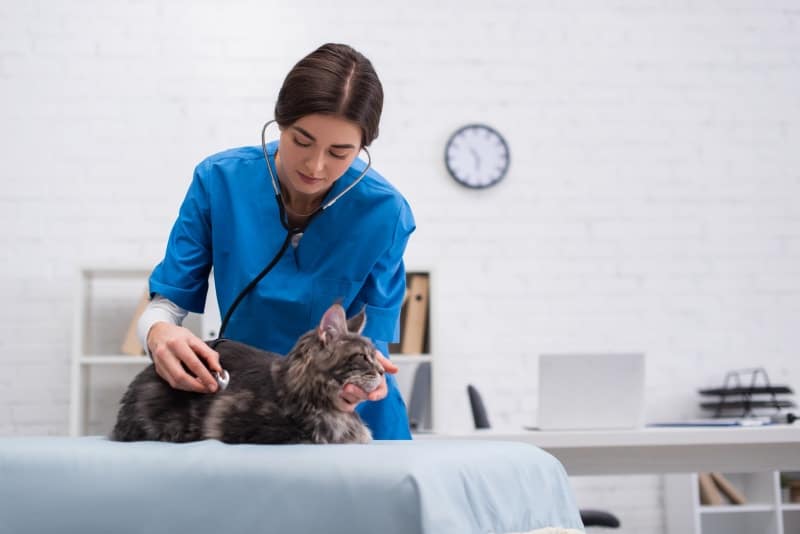
Regenerative Anemia
In regenerative anemia, the bone marrow still produces new erythrocytes.
- Gastrointestinal bleeding caused by parasites, ulcers, or intestinal tumors
- Coagulation disorders
- Wounds (trauma) and tissue tears
- Poisoning with coumarin derivatives, such as rat poison, or oxidative substances, such as acetaminophen (Tylenol), onions, zinc, etc.
- Infections
- Flea infestation
Non-regenerative Anemia
In the case of non-regenerative anemia, the bone marrow can no longer produce sufficient amounts of new red blood cells.
- Disorders of the bone marrow (caused by certain drugs or poisons, ionizing radiation, or infections like FeLV, FIV, myelodysplastic syndrome, etc.)
- Immune-mediated
- Kidney disease
- Chronic liver diseases
- Chronic inflammation
- Poor nutrition or starvation
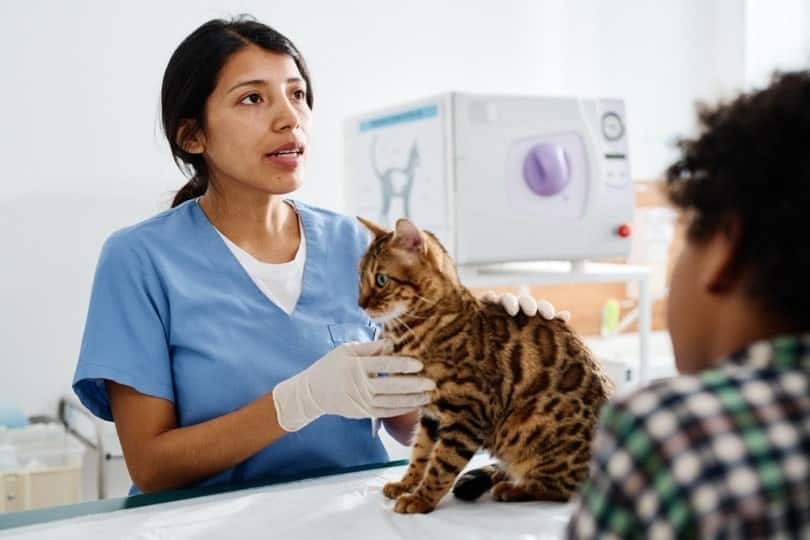
How to Recognize Anemia in Cats: Clinical Signs
If your cat suffers from anemia, they will exhibit changes in their behavior due to a lower content of oxygen in the blood. Here are the clinical signs that you might notice if your cat has anemia:
- Lethargy
- Sleeping more than usual
- Ears and extremities being (constantly) colder than normal
- Rapid heartbeat
- Rapid breathing
- Difficulty breathing
- Lack of appetite
- Pale mucous membranes (gums, eyes)
- Black, tarry feces
- Heart murmurs
- Collapse (in severe cases)
Depending on what caused the anemia, your cat may also show other clinical signs. For example, if your cat has been poisoned with rat poison, bruises may appear on their body or gums, they may vomit blood and have bloody diarrhea or blood in urine, etc. If your pet has chronic kidney disease, they may experience extreme thirst and change their urination behavior.
If your cat displays any subtle clinical signs or changes their behavior, do not hesitate to contact the vet. The sooner your cat is evaluated, the better the chances of recovery.
How to Prevent Anemia in Cats
Anemia cannot always be prevented, but here is what you can do to reduce the risk of its occurrence:
- Vaccinate your cat regularly, as recommended by your vet.
- Deworm your cat regularly, as recommended by your vet.
- Treat your cat regularly against fleas as recommended by your vet.
- Feed your cat a balanced and complete diet.
- Take your pet for regular vet checkups (once per year until your cat becomes a senior and twice a year from then on).

Conclusion
Anemia can be a life-threatening problem for your cat. The clinical signs of anemia in cats can include tiredness, lethargy, lack of appetite, pale gums, and rapid breathing and heart rate. The number of red blood cells can decrease in various pathologies, the most common being trauma, tumors, internal bleeding, viral infections, and gastrointestinal, kidney, or other chronic diseases. A complete blood count will show the number of red cells, and the veterinarian will know if it is anemia or something else (corroborating with other test results).
To increase the number of red blood cells, the vet may recommend several ways to manage this condition based on the underlying cause. Never give your cat any iron or other supplements before speaking to your veterinarian, as it may cause more harm than good and will not treat the underlying issue.
Featured Image Credit: brodtcast, Shutterstock

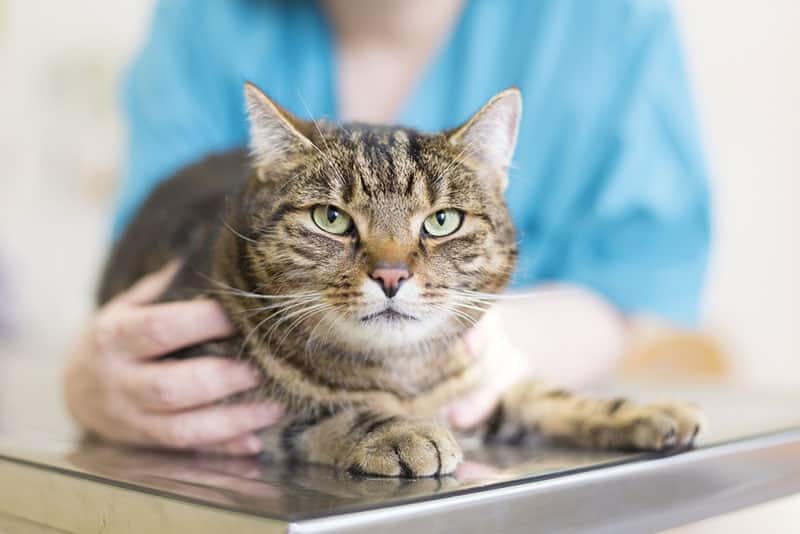
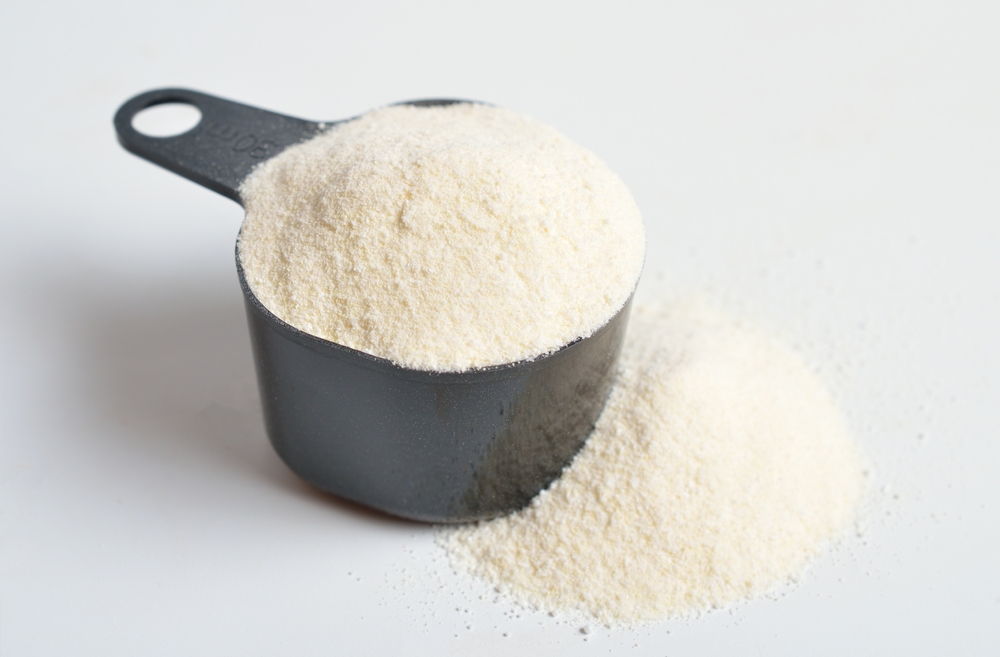
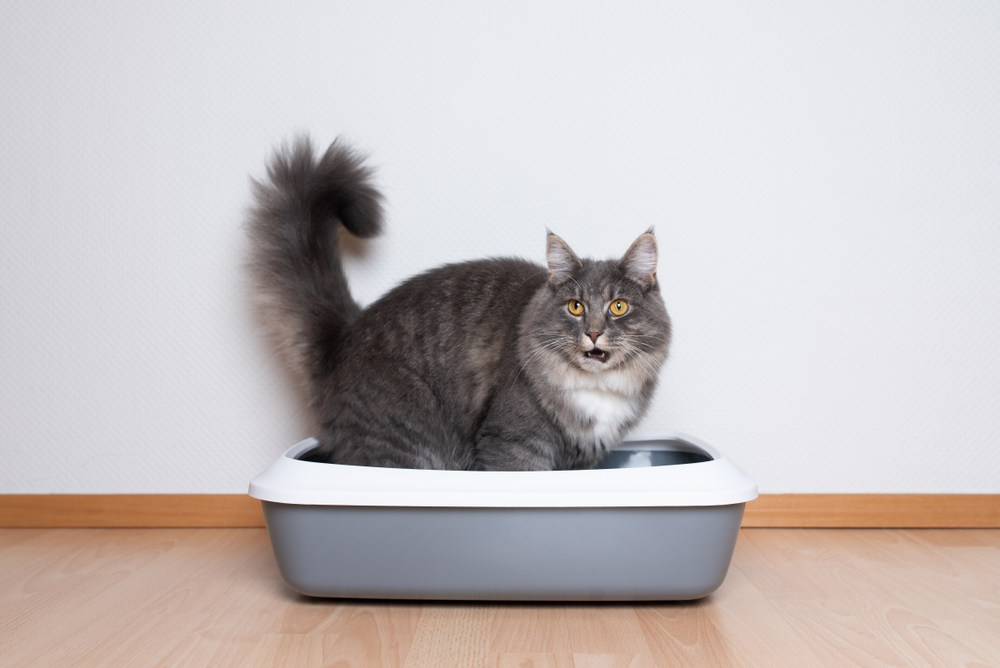





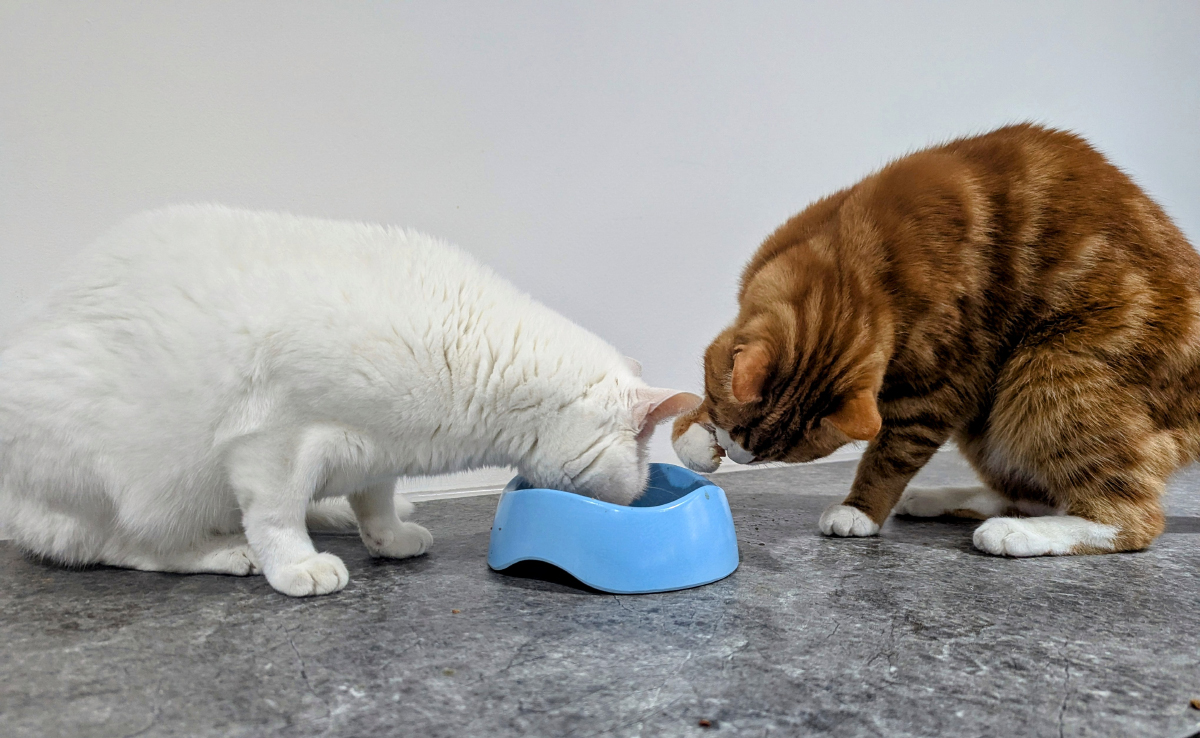
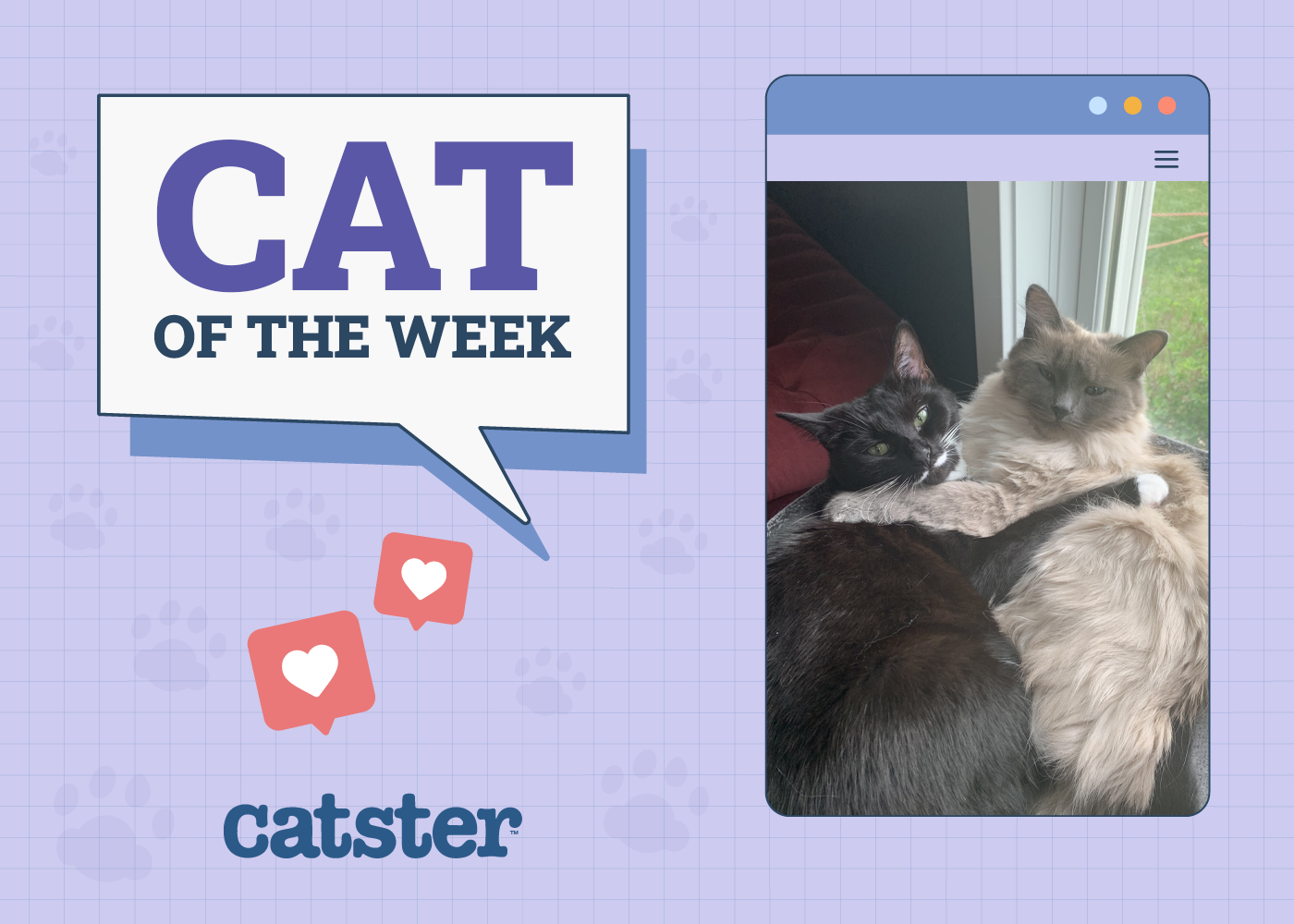
I am so confused about my vet and my cat. I took her in because she had a growth at the top of her right hip, at first it was the size of a jawbreaker candy, and round just like the candy. She wouldn't let me get a good look at it, at first I thought it was on the upper tail area, she's solid black, so I was having a hard time trying to even figure out the location. She was fine, except she didn't want me to touch her. Then within a week, the thing was almost the size of a pear. (oddly shaped) she didn't want me to touch it, but I did it anyway and it was hard and lumpy. went to vet. they did blood work and said she was too anemic for a biopsy. offered to put her down that day. I was freaked out. I said I would take her home for Christmas, and come back afterwards. The more I thought about it, they want to put her down without knowing if it's cancer or not. So, I am feeding her and taking care of her as well as I can. I don't have the money to start over at a different vet. I just had spent 1000. on my dog the month before and 5,000 on storm damage. I'm retired SS disability. Cat is only 8 years old. I don't think she's old yet. 😢 can you advise?
Hi Karla Duncan, sorry to hear about your cat, dog, and the storm damage. You might find the following post useful.
When to Euthanize a Cat? Vet-Reviewed Factors & FAQ- https://www.catster.com/cat-health-care/when-to-euthanize-a-cat/
How Do Vets Put Cats Down? Euthanasia FAQ Explained- https://www.catster.com/cat-health-care/how-do-vets-put-cats-down/
Why Euthanasia Is A Gift: Dr. Karyn Explains
https://www.catster.com/felines-weekly/why-euthanasia-is-a-gift/
If you need support from a vet to see your cat’s case and help guide your next steps, you could try www.pangovet.com. This online service costs a fraction of a vet visit and can help you decide if your original vet’s recommendation is the best choice.